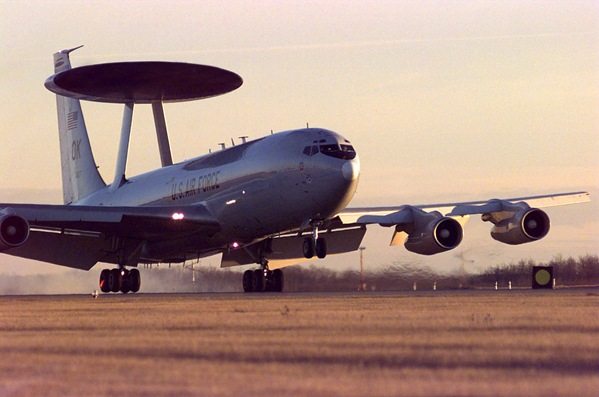For the first time in 38 years, realistic intelligence will be an integral part of the Air Force’s signature aerial combat training exercise.
The Air Force Intelligence, Surveillance and Reconnaissance Agency, via its 526th Intelligence Squadron, will be a key player at Red Flag 13-3, Feb. 25 to March 15, at Nellis Air Force Base, Nev.
This marks the agency’s debut providing real-time intel to Red Flag participants at the Nevada Test and Training Range. The NTTR is the largest contiguous air and ground space available for peacetime military operations in the free world, where testing, training and tactics development are conducted.
“(Since Red Flag was established in 1975) intelligence had to be faked, or what we call white carded,” said Maj. Christopher Keown, the director of operations at the 526 IS at Nellis AFB. “In the old days you would literally write down the event or intelligence action on a white card and hand it to an analyst.”
The agency and the Air Force Warfare Center (weapons school) at Nellis are teaming to produce a realistic environment that replaces the need to pass white cards.
“With the Air Force ISR Agency represented at Red Flag planning, it allows us to produce scenarios that properly represent the enemy and ensure realistic intelligence can be collected and passed to Red Flag participants,” Keown said.
The impetus behind the agency’s Red Flag involvement was the vision of Air Force ISR Agency Commander Maj. Gen. Robert P. Otto.
“Shortly after taking command in July 2011, he researched the needs of the intelligence community,” said Maj. Shawn McPherson, the Air Force ISR Agency chief, Multi-INT Airborne Capabilities. “He then designated the 526th IS as a focal point for achieving a Red Flag-like experience for ISR professionals and a place to explore the feasibility of ISR operational Tactics Development and Evaluation.”
In 2012, Otto characterized Nellis AFB as, “the center of the universe for tactics, and prepping pilots for the fight.”
Agency leaders agree bringing ISR operations to Nellis AFB is a key breakthrough not only for the agency, but for combat operations and training.
“The ability of ISR and combat forces to integrate in a collocated environment provides the best opportunity to prepare for tomorrow’s fight,” said Lt. Col. Christopher Reiz, the 526th IS commander. “(Our) squadron expands the all-in commitment of the agency and allows cross-cue education and training between ISR and flying communities.”
Cross-cueing is putting multiple ISR aircraft with varying capabilities in the same location, collecting against the same targets to refine location and intent.
Spearheaded by Airmen of the 526th IS, the agency’s preparation focus includes: scenario development, designed to produce a realistic operating environment for ISR to collect against; operative forces scripting, which mimics enemy communication techniques and procedures; implementing an ISR package commander position, which applies lessons learned from previous years; standing up a distinct ISR Shot Validation meeting, which determines successes and failures; ISR Familiarization Day, which prepares its forces for the next fight.
The anticipated takeaways by agency Airmen at Red Flag will be significant and they’re ready for the challenge.
“The agency is armed with the best combat intelligence Airmen who have successfully supported and drove counter insurgency missions for the past 11 years,” Keown said. “Red Flag provides a high-threat environment they have not experienced. They’ll have to use their intelligence capabilities to the max.”
There’s also a tangible long-term benefit.
“This training will be crucial in ensuring that regardless of the ISR professional’s background, they’ll be able to hit the ground running from day one on any deployment,” McPherson said.
Other Red Flag participants and event organizers see their new ISR partners raising the exercise bar.
“You fight with what and who you train with,” Keown said. “They’re excited with the effort the agency is placing in Red Flag. It’s taken the training to the next level and is playing an integral part in setting the new base-line for Red Flag exercises.”










